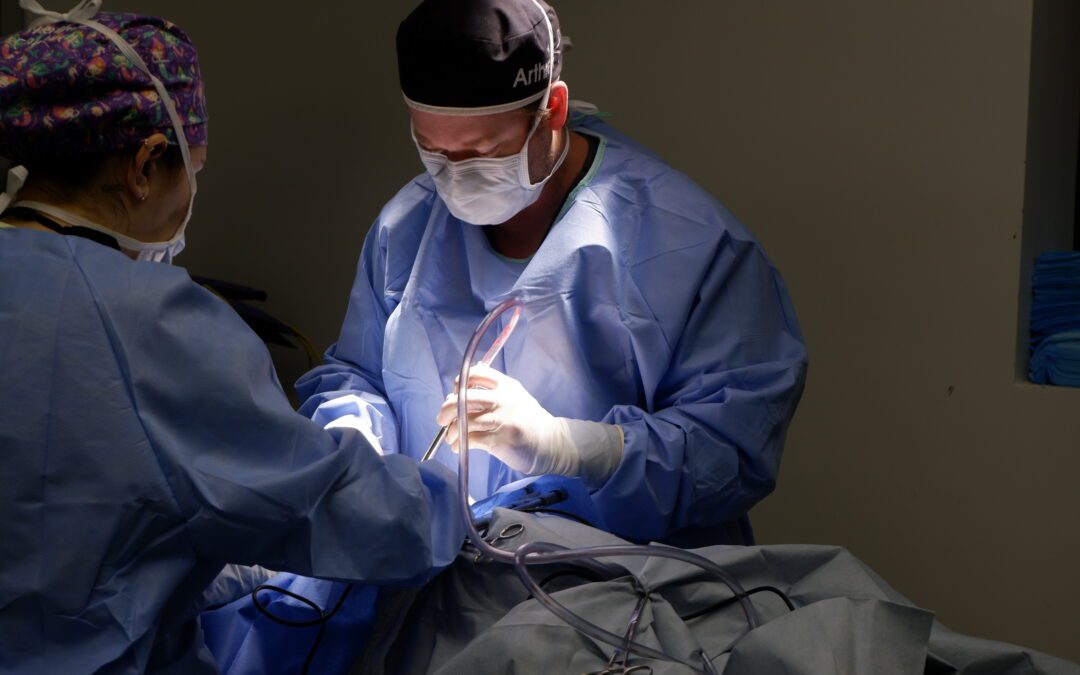Does My Pet’s Limp Require Medical Attention?
As pet owners, we always strive to ensure the well-being and happiness of our beloved furry companions. Therefore, when we notice our pets limping, it can be a cause for concern and prompt us to seek answers. When your pet suddenly develops a limp, you may wonder whether it is a problem that requires urgent care or an issue that can be managed at home with rest. Pets can limp for a variety of reasons but one of the primary causes is injury. Just like humans, they can experience sprains, strains, fractures, or dislocations due to accidents, falls, or overexertion. For this very reason, proper diagnosis and treatment from a veterinarian is vital for a persistent limp.
Causes of limping in pets
Pets limp for many reasons. Some of the most common causes include:
- Osteoarthritis
- Torn cranial cruciate ligament (aka ACL)
- Hip or elbow dysplasia
- Anatomical abnormalities such as angular limb deformity (birth defects)
- Joint dislocation
- Muscle sprain or strain
- Tick-borne disease
- Torn nail
- Wound on the paw or leg
- Nerve damage
- Bone fracture
- Cancer
How to assess your pet’s limp
Pets can develop an acute or chronic limp that has varying degrees of severity. If your pet begins limping suddenly but then is fine after a few steps, they likely do not require any treatment. Therefore, pay attention to which leg your pet is limping on, along with how they act. For example, if your pet is limping on a hind leg in a toe-touching manner but does not seem to be in much pain, they likely have torn their cranial cruciate ligament (same as human ACL). Or, if your pet’s lameness shifts from leg to leg and sometimes disappears completely, they may have a tick-borne illness like Lyme disease. These conditions require veterinary treatment, as does a limp that results in no weight being put on the affected limb or one that worsens over time.
When a limping pet needs emergency treatment
When your pet begins to limp, you can try to restrict their activity for a few days to see if it improves. However, some limping conditions require immediate treatment, largely because of concurrent problems.
If your pet has a severe limp and any of the following signs, it is time to schedule a consultation with our Surgery Department:
- Vocalization (e.g., howling, yowling, or growling)
- Trembling
- Behavior changes (e.g., hiding, refusing to move, or being aggressive)
- Bleeding
- An obvious fracture or dislocation
- Dragging the limb
- Large swelling on the affected limb
- Lethargy
- Disorientation
- High fever
- Vomiting
- Trouble breathing
When in doubt about the severity of your pet’s limping, contact our team. We will triage their condition to determine the best course of action in caring for your furry friend. Remember, a veterinarian is the best resource for addressing your pet’s limping and ensuring their well-being.
Meet The Surgery Team
Board-certified surgeon, Dr. Matthew Morgan, and the Surgery team at VERG Brooklyn are here to help if you have questions before or after your pet’s surgical procedure. At your pet’s initial consultation, we will carefully evaluate your pet’s current health and walk you through what to do to get ready for their surgical procedure. Following treatment, we provide personalized care instructions to ensure your furry friends remain healthy and heal quickly. If you ever have questions or need help before or after treatment, please contact our dedicated team at surgerydept@verg-brooklyn.com. We are happy to help.

